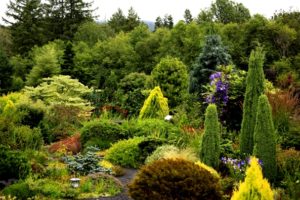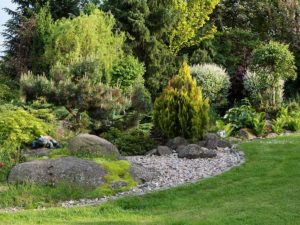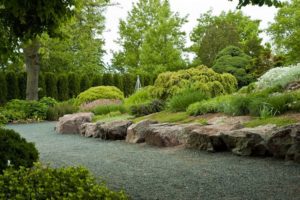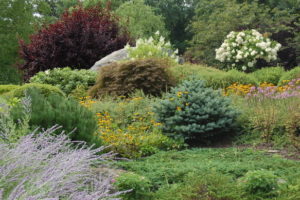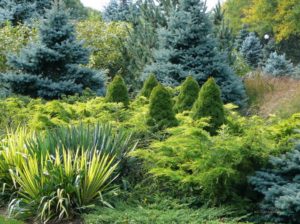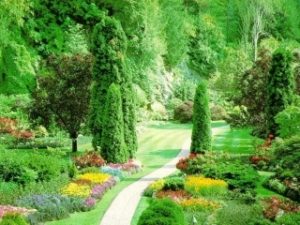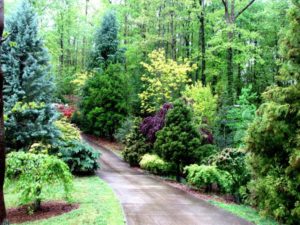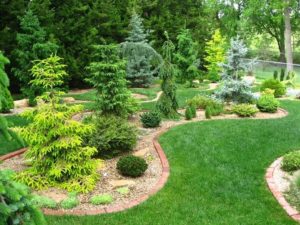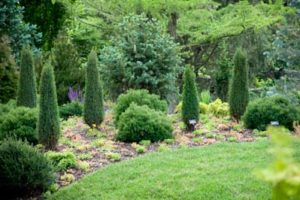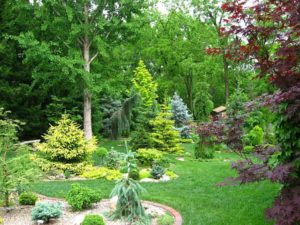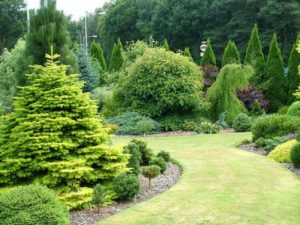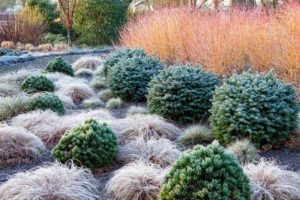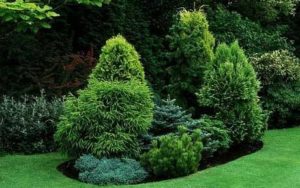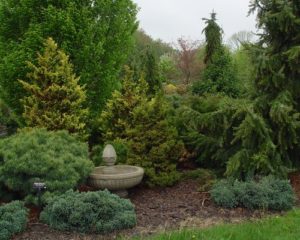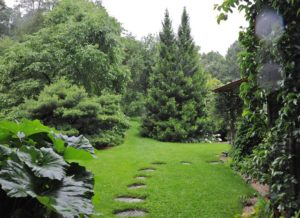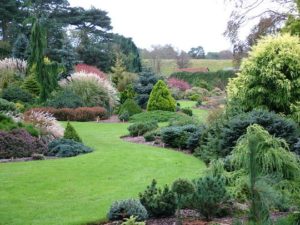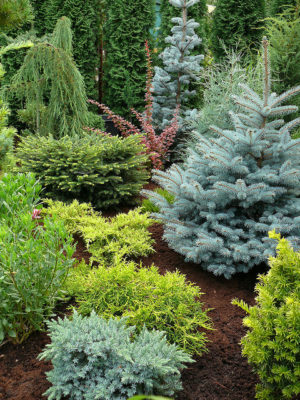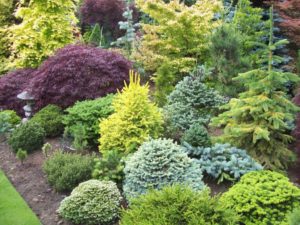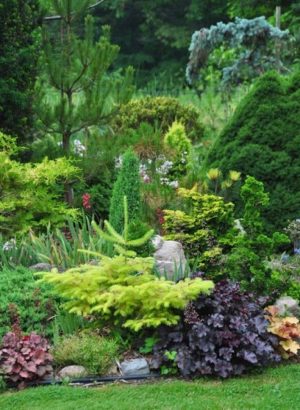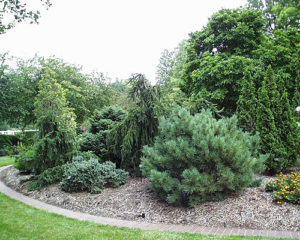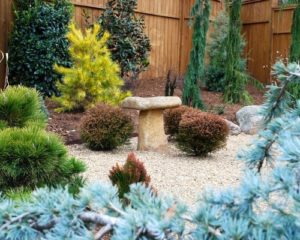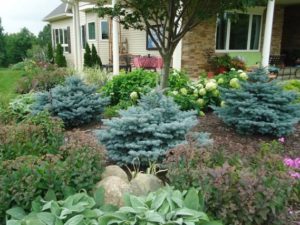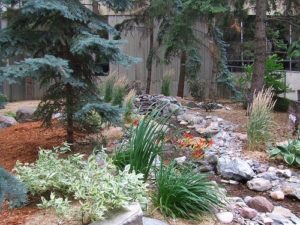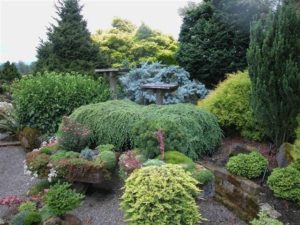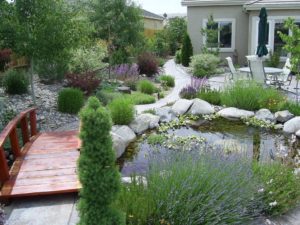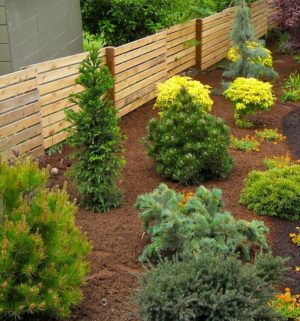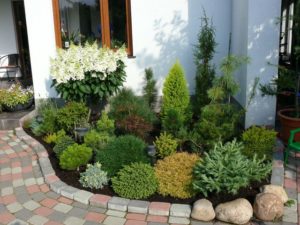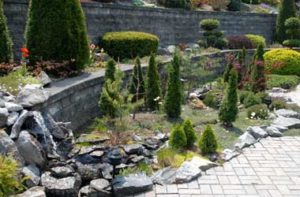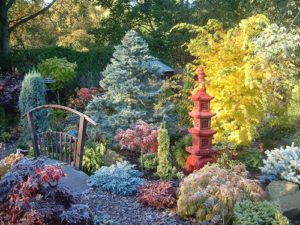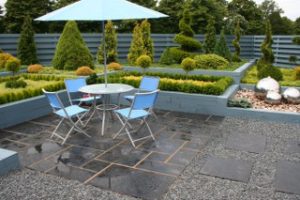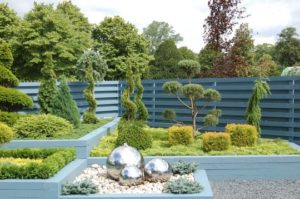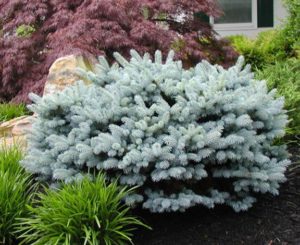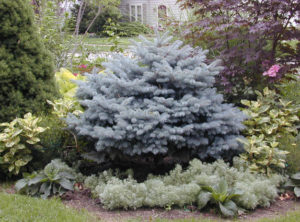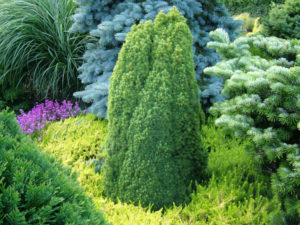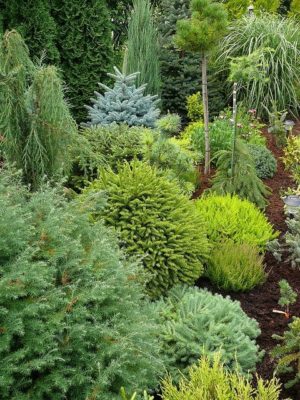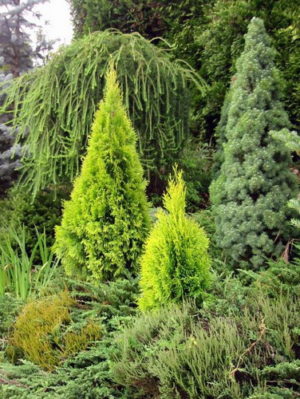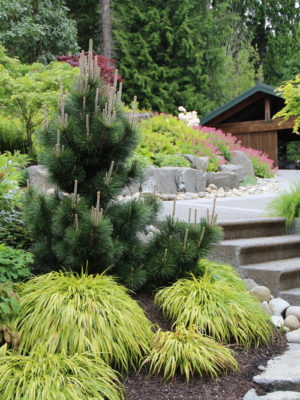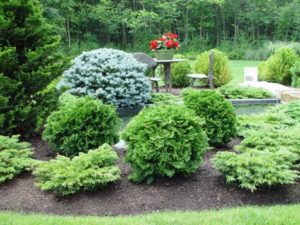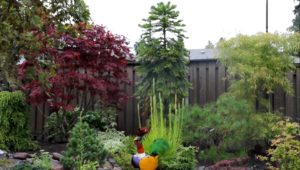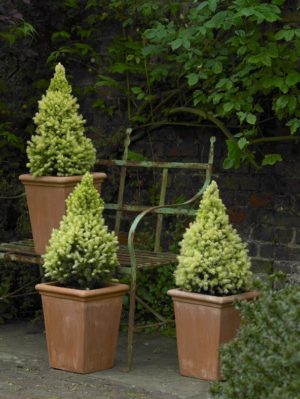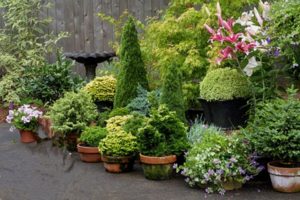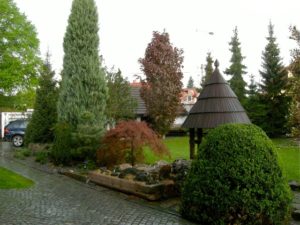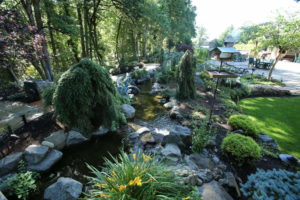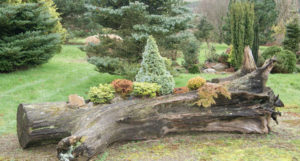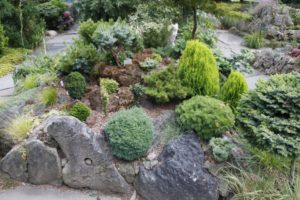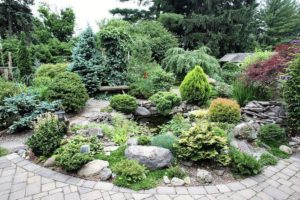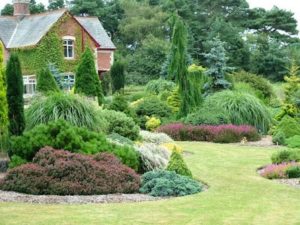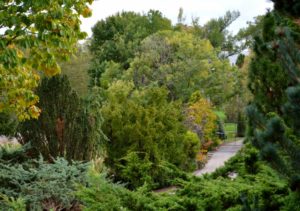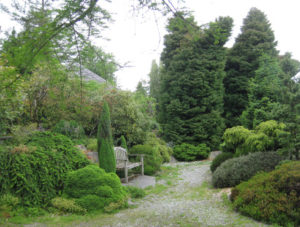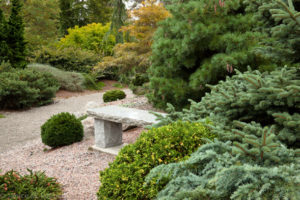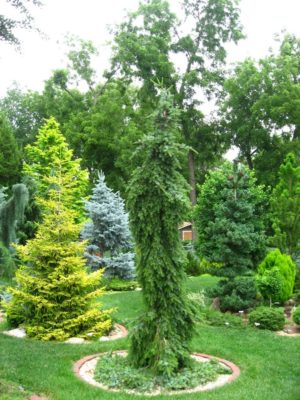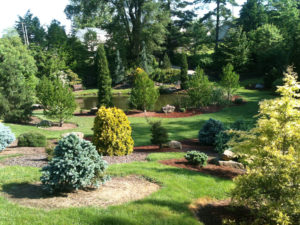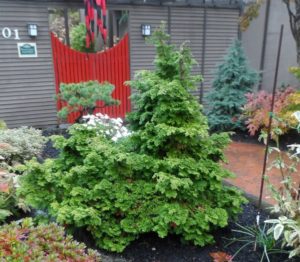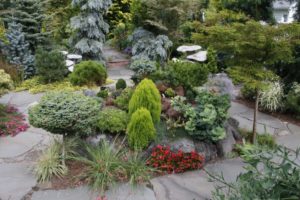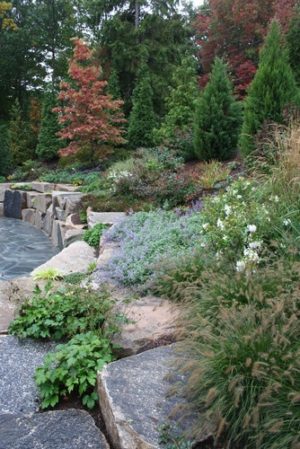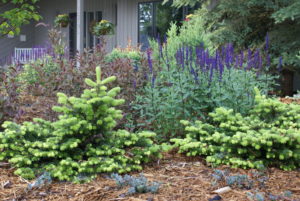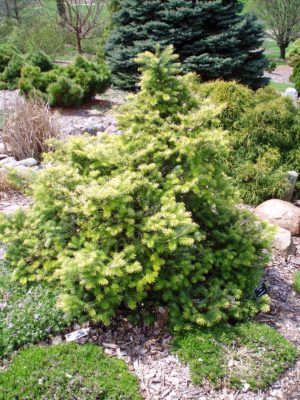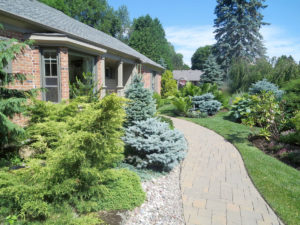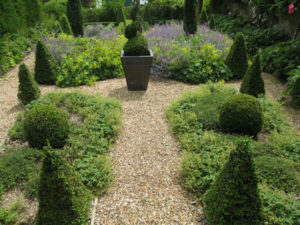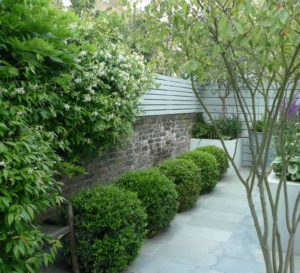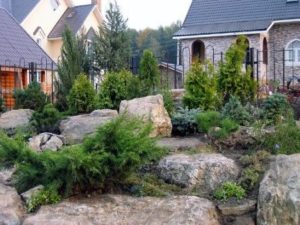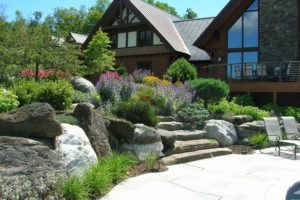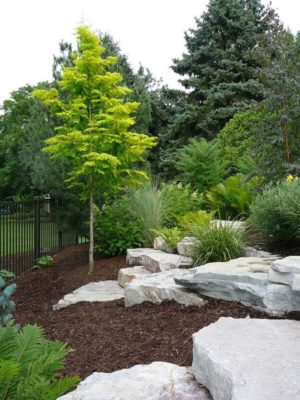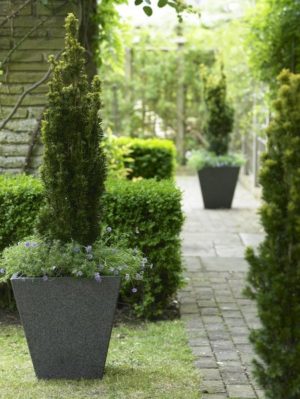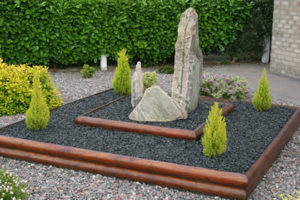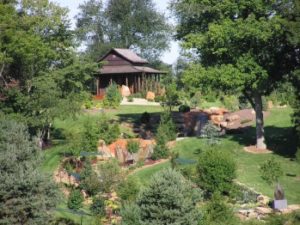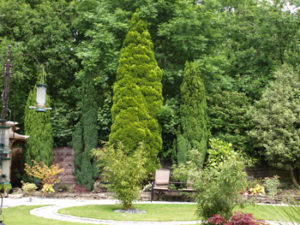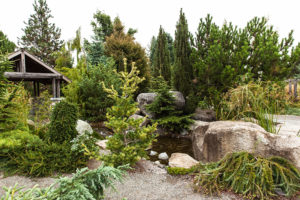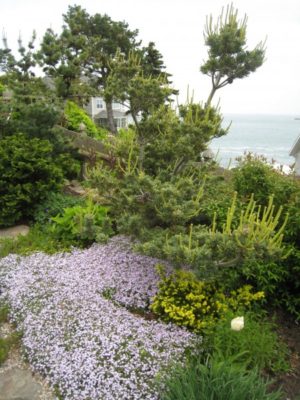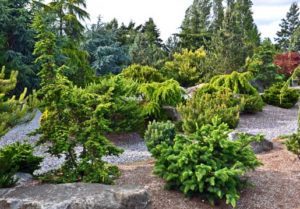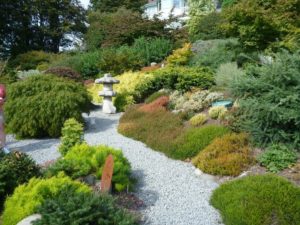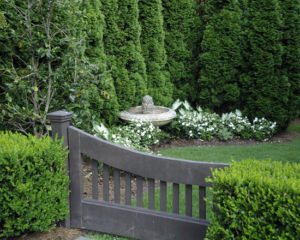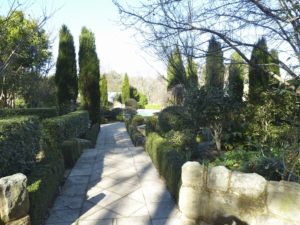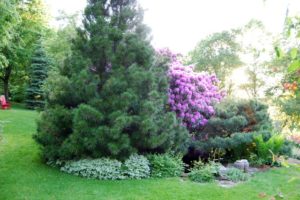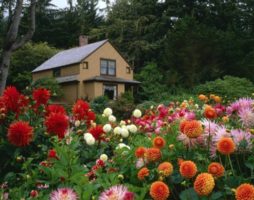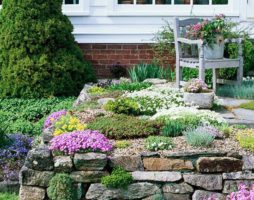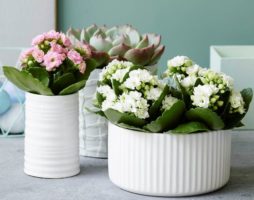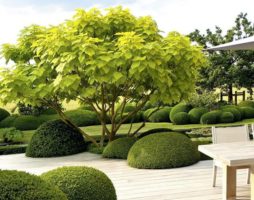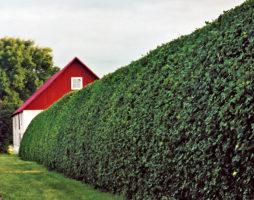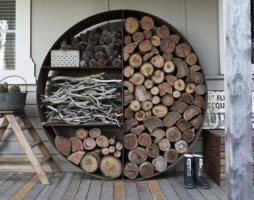coniferous plants - the personification of beauty and nobility. They make the territory in which they grow uniquely attractive, and allow it to remain so in any period.
Due to the huge varietal diversityornamental coniferous plants ceased to be the privilege of spacious parks and settled on the lands of modest household plots. Which of them managed to win the most popularity among gardeners and why landscape designers love representatives of coniferous trees, we will try to figure it out in this article.
Why choose coniferous plants for the garden
Why is it increasingly preferred to see coniferous plants in the landscape design of small plots today? There are many reasons for this. First of all, it is the invariable aesthetics of evergreens. They are beautiful both in the sun and in the snowdrifts. Plants are not pretentious. They do not need any special conditions for growth. They are easy to fit into any landscape compositions.
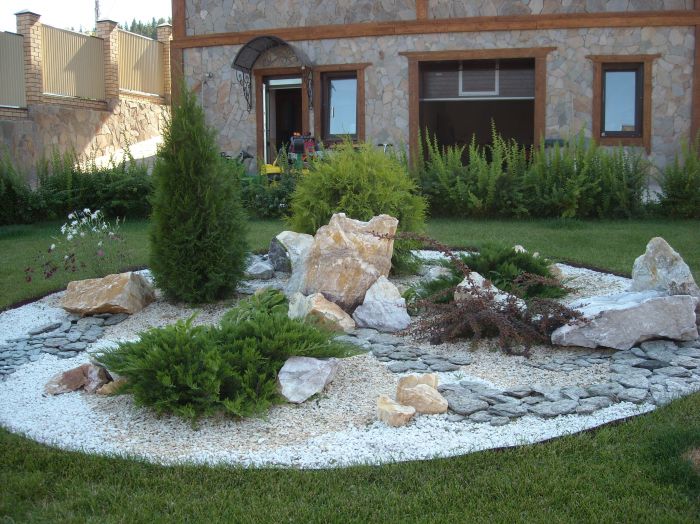
Coniferous plants will easily fit into any landscape compositions.
The presence of even undersized coniferous plants will create a mild microclimate on the site. Their higher relatives are able to absorb noise and dust. Coniferous plantings protect well from gusts of wind. Add here the high performance of coniferous oxygen, plus the release of super useful phytoncides for human health, and the question of whether or not to be in the landscape of your dacha for their representatives will be resolved automatically.
back to index ↑Types of coniferous plants for the garden
“The most popular for small plots are dwarf conifers”
For garden plantings, you should choose representatives of the following categories of evergreens:
- yew;
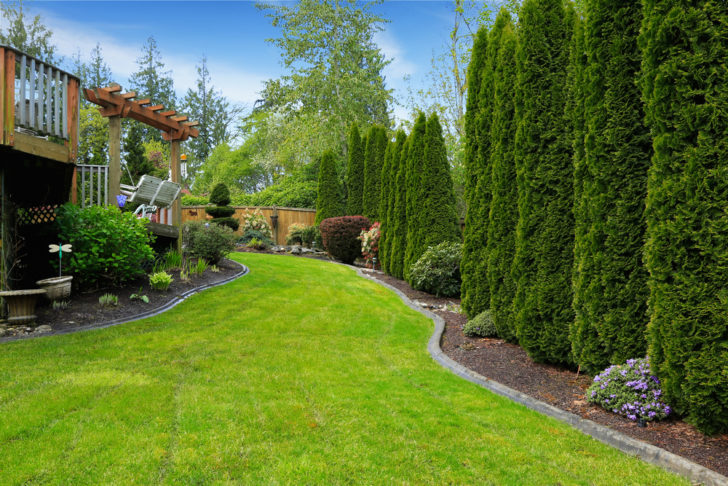
Yew coniferous plants for the garden
- cypress;
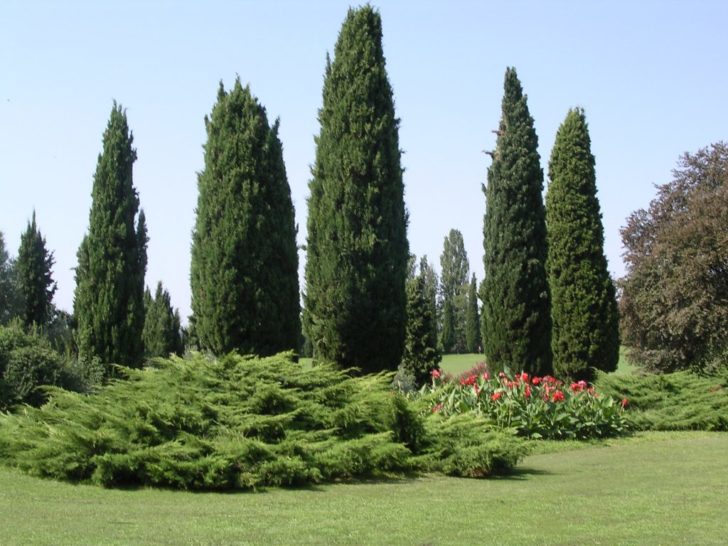
Cypress trees in the garden
- pine.
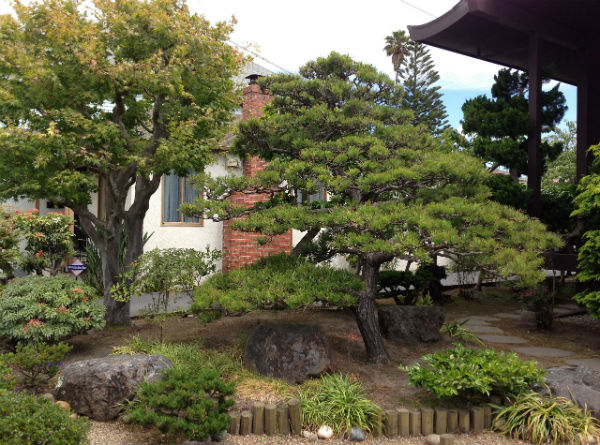
Pines for the garden
The most popular for small areas are dwarf conifers. Experts recommend taking a closer look at junipers. Light-loving conifers are ready to grow even in sand, even on stony soils. Their representatives may have a columnar or creeping crown. These representatives of coniferous plants saturate the air with the finest healing aroma. In landscape design, decorative coniferous plants of this species become an adornment of rocky compositions and are actively used in creating natural-style gardens.
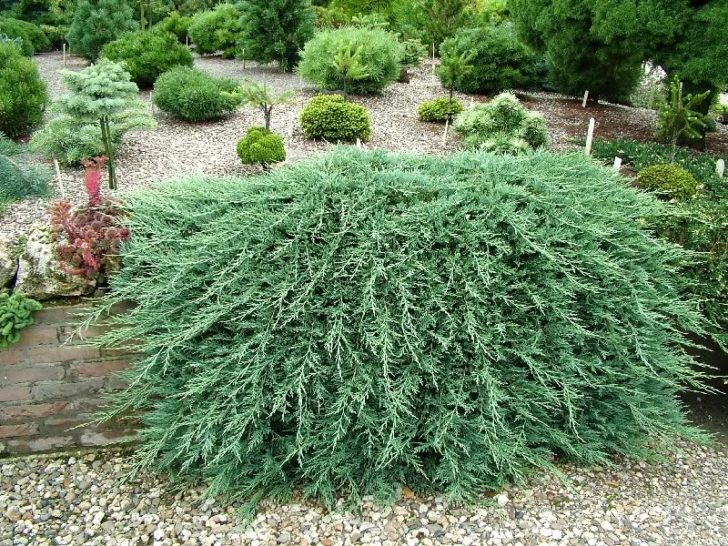
Creeping Juniper
Unpretentious arborvitae, which take any architectural form, are in demand in the design of alleys and are suitable for hedges. Plants practically do not respond to transplants and are not afraid of smoky areas, so they can grow near roads.
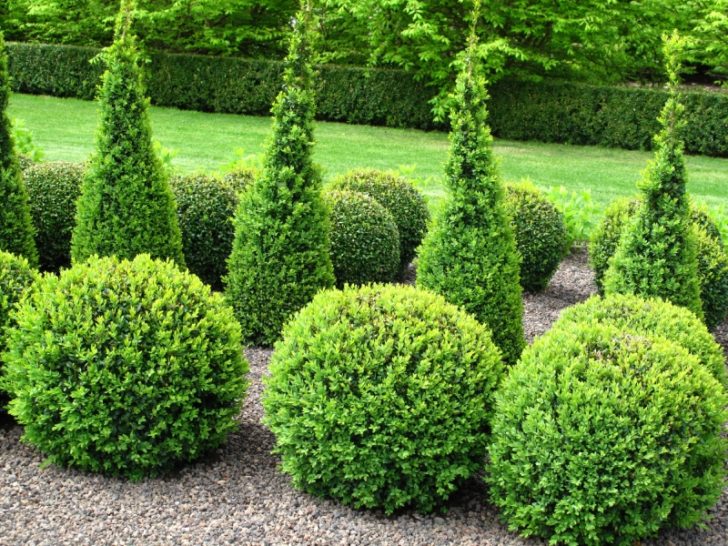
Tui with curly haircut
Dwarf coniferous plants of thuja varieties with soft scaly needles of bright green color and geometrically correctly formed crowns are planted:
- in the rock garden
- group landings,
- on the hills.
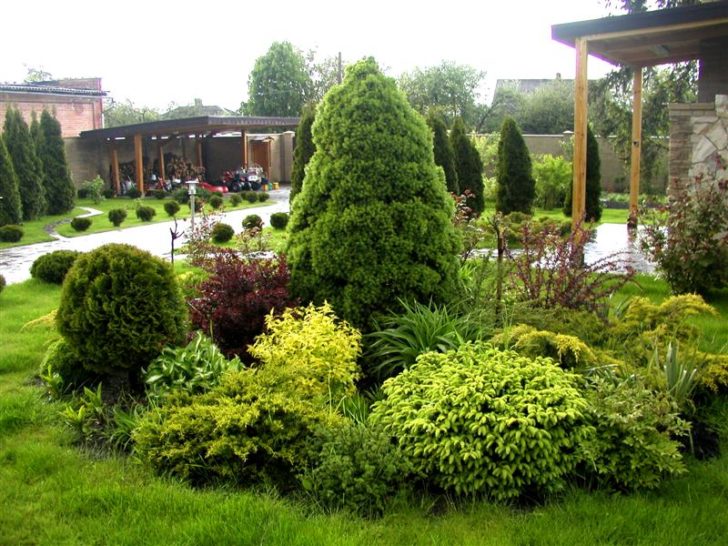
Rock garden from coniferous plants
Representatives of larches are interesting in garden plantings.Low-growing coniferous plants of these species will become a worthy decoration of rocky landscapes, while tall individuals are collected in group plantings. They are not bad in single growth. Larch captivates with its durability. Their lifespan is measured in centuries.
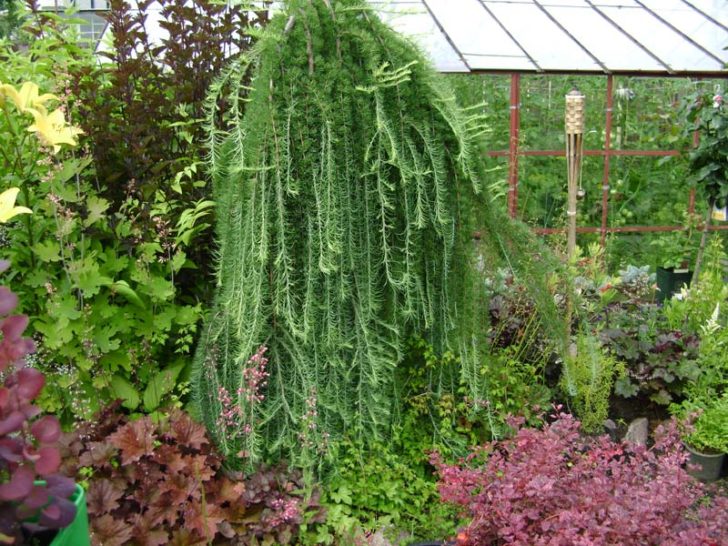
Larch in a group planting
Pyramidal firs stand out for their medicinal qualities. Due to their high altitude, their representatives mainly land in single plantings.
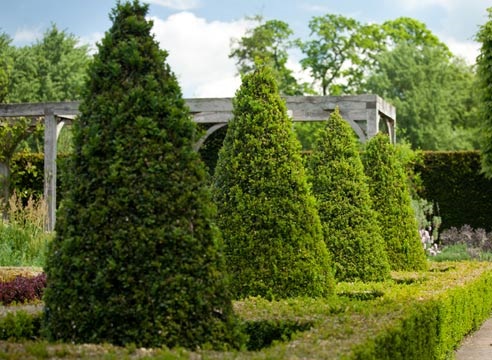
pyramid firs
The most unpretentious pine and spruce trees are found in almost all compositions. They delight with a variety of crown colors, growth range, and readiness for topiary haircuts.
What's where
Tall ornamental coniferous plants in the landscape of a small area will take on an accent role. They become the center of harmonious plant compositions.
Medium-sized species of conifers decorate paths, the entrance group, and work as hedges.
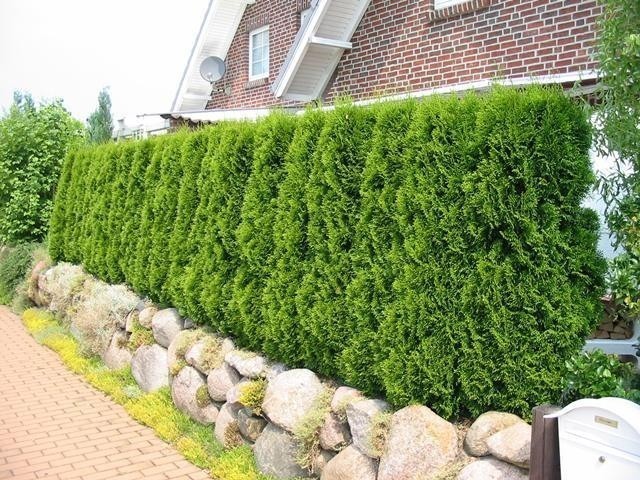
Coniferous hedge
Dwarf conifers are ubiquitous in garden landscape design. They are relevant in any corner and can successfully complement any composition. They are especially good in combination with decorative grassy.
Tall or dwarf conifers?
If you choose between tall or short evergreens, the latter will have a clear priority.
Despite the fact that they are an exact copy of the full-sized original and have all the stages of development characteristic of the variety, undersized conifers do not need so much space to exist. They are more adapted to the decorative mission, so they are more harmoniously perceived in rockeries. They are valuable for the possibility of growing in containers, which makes the plants mobile and allows you to move them to any garden corner and even to the house. Small growth contributes to a calm wintering. Covered completely with snow, coniferous plants do not freeze.
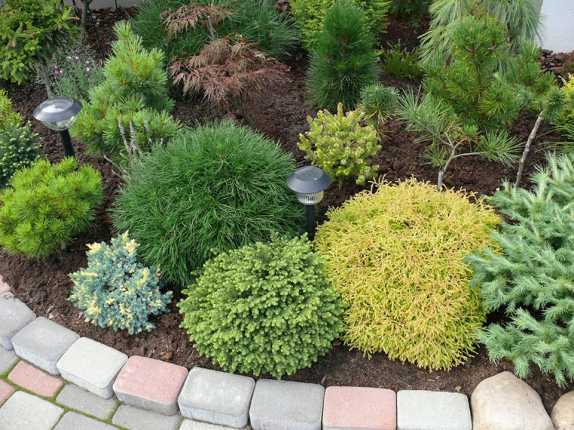
Dwarf coniferous plants in the garden
Although some of the dwarfs are not as durable as their natural prototypes, however, the use of even such types of conifers in landscape design gives excellent results.
To prolong the life of their green friends, they need to provide proper care, special attention, while paying attention to the correct application of top dressing.
back to index ↑Fertilizer rules for coniferous plants
In fact, dwarf conifers growing on garden lands do not require a large amount of nutrients. This is due to the lack of full-fledged foliage dumped for the winter. Trees do not need to restore the crown in the spring. They are not burdened by the process of abundant fruiting, so they need additional minerals only for forcing the annual growth, which, by the way, is not so great in undersized coniferous plants.
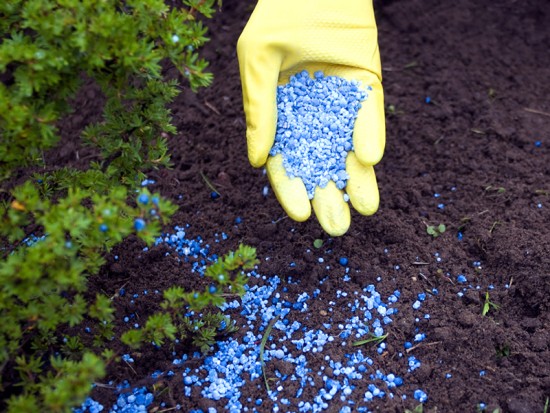
Coniferous plants do not need a lot of fertilizer
What do conifers support
Garden nutritious mixes are not suitable for trees of this family. Even worse, they react to organic matter such as manure and herbal infusions. Such fertilizers in coniferous plants provoke rapid growth development, which often ends in the death of individuals. And the problem here is not an overdose, but in the chemical composition. If there is no suitable feeding, it is better not to feed ornamental coniferous plants at all than to give them anything. Today there are no problems with the range of specific nutrient mixtures, however, even if there is a label on the label saying that this type of fertilizer is for coniferous plants, do not rush to purchase it. Look at the composite components first. Evergreen trees do not require a high nitrogen content. They activate the growth of new shoots. The process will be so fast that new shoots will not have time to mature, which will lead to their inevitable death in the cold.For the same reason, coniferous plants in garden landscape design should not be given diluted mullein.
Experts insist that the optimal compositions for them are:
- rotted compost;
- biohumus.
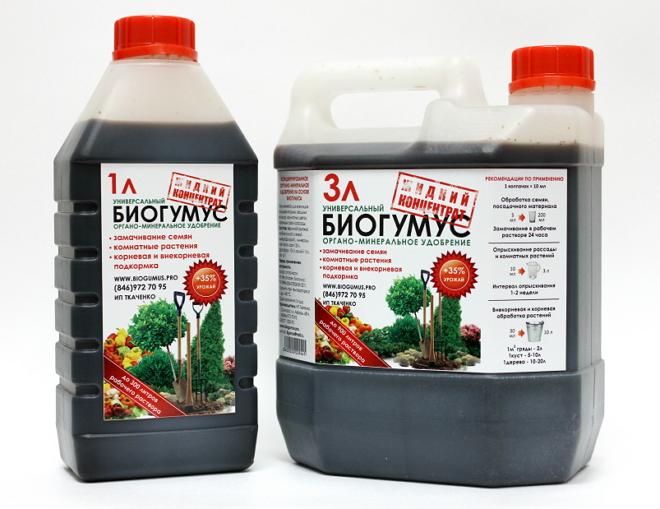
Biohumus is the optimal fertilizer for conifers
How to fertilize
So that undersized coniferous plants do not lose their decorative effect, it is enough for them to give top dressing only twice a summer. The first portion is brought in during the period of activity of growth points, the second - in the last days of August. Later introduction of the last portion of fertilizer for coniferous plants is prohibited. To make the trees absorb the top dressing faster, it is recommended to use its liquid varieties. Ready concentrates are diluted according to the instructions and poured into the trunk circles. After watering, soil mulching is performed.
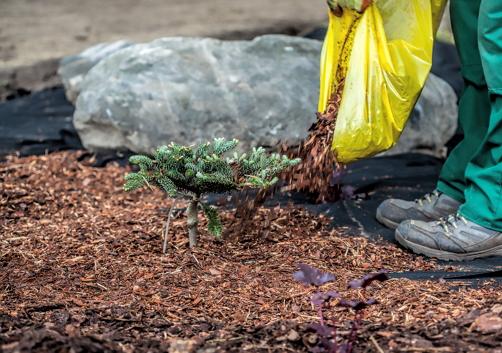
Soil mulching for conifers
If granular types of fertilizers for coniferous plants are used, then they are poured around the perimeter of the near-stem circle and mixed with the soil by digging the latter or loosening it. Compost is added in the same way.
With excessive soil acidity, it is better to fertilize dwarf coniferous plants with dolomite flour. It contains calcium and magnesium in a form that is easily absorbed by the root system.
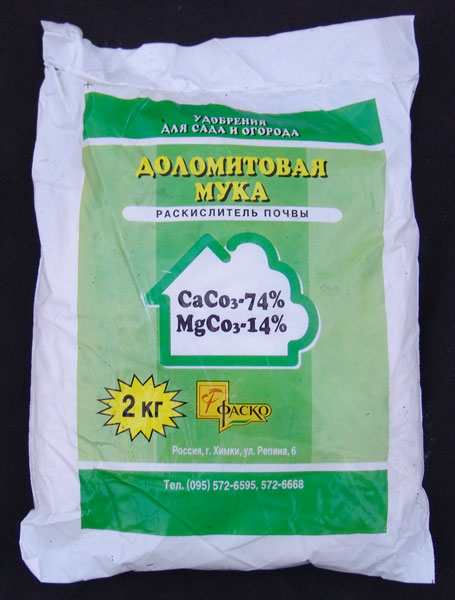
Dolomite flour will remove excess soil acidity
Diseases of coniferous plants
“You can protect the planting of coniferous plants in landscape design by timely removal of dried specimens, and together with the root”
Pickiness and endurance does not save the representatives of this family from diseases. Ornamental coniferous plants are especially affected by infectious diseases provoked by fungi. In second place are ailments caused by inappropriate conditions of detention, in particular those associated with an excess of moisture. Excessive moisture and waterlogging of soils cause needle necrosis.
Thuja, yew, spruce do not like the drying of the roots, so their tree trunks should always be mulched. For this, peat, mowed grass can be used.
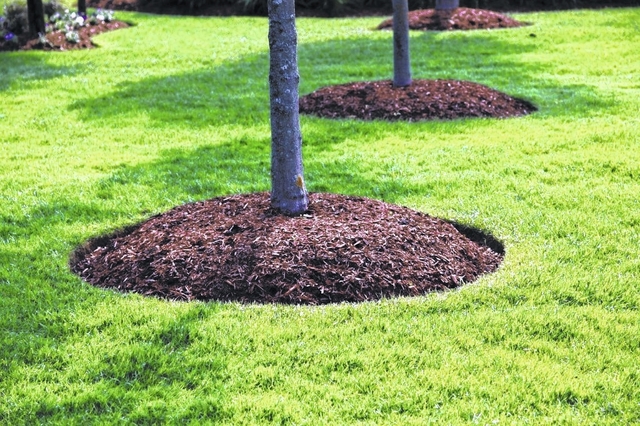
The trunk circles of the thuja should be mulched
Significant losses of dwarf conifers living in containers are due to the defeat of their roots by soil-dwelling fungi of the Pytium and Rhizoctonia types. Tracheomycotic wilt is caused by lesions by anamorphic fungi. These parasites launch mycelium into the vascular bed of trees and thrombose its gaps with overgrown biomass. First, the yellowed coniferous cover falls off, and then the whole plant gradually dries out.
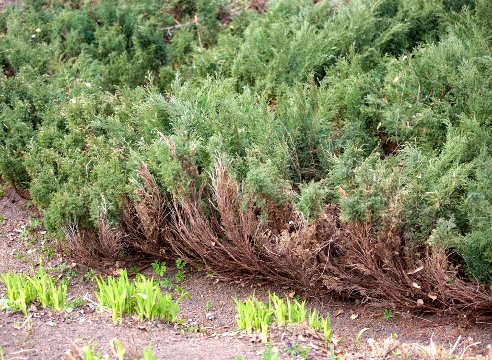
Tracheomycotic wilt of conifers
Seedlings of coniferous plants are especially vulnerable in this regard. It's almost impossible to save them. The infection has a spore-forming nature, so its pathogens are perfectly preserved even in plant debris. The disease is spread through infected soil or infected seedlings of coniferous plants for the garden. The development of the outbreak is facilitated by waterlogged soil and low sunlight.
It is possible to protect plantings of coniferous plants in landscape design by timely removal of dried specimens, and together with the root. Of the preventive measures, it is recommended to water the soil under coniferous fungicidal solutions, such as Fundazol.
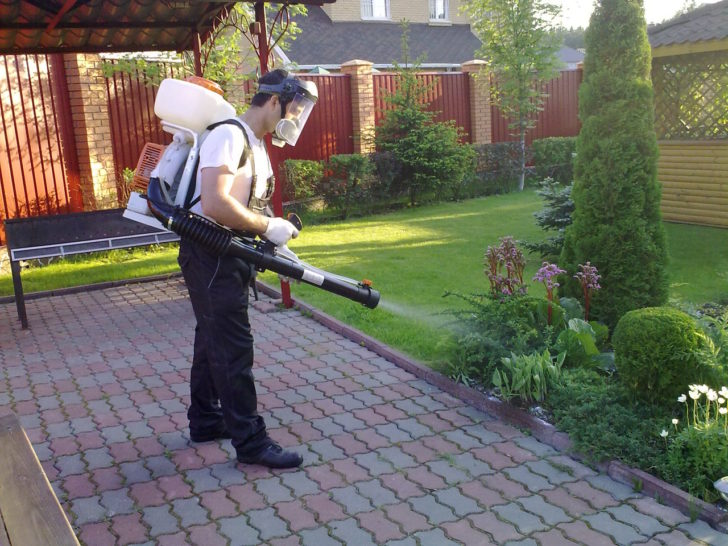
Treatment with a fungicidal solution
Gray mold is no less dangerous for coniferous plants. The aerial parts of the young are already susceptible to rot. The disease is the scourge of dense plantings. An alarming symptom is a gray-brown, dust-like coating on the shoots.

Gray mold on needles
Shutte is becoming a serious problem for breeders of ornamental conifers. The cause of the development of the problem again becomes fungal, only already ascomycete species. At the initial stage, on the needles you can see thin, like dark threads intercepting a needle, transverse lines.The spread of spores is facilitated by high humidity in moderately warm weather.
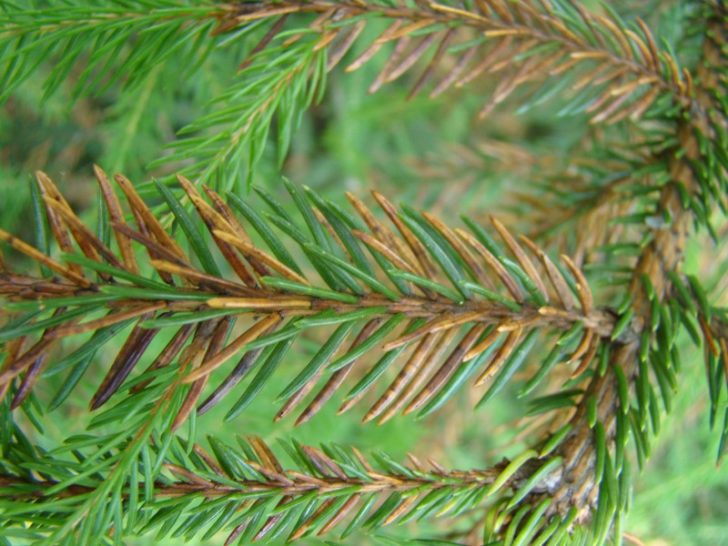
Needles infected with shute
Timely thinning of plantings and preventive spraying will help get rid of the shute.
Rust lesions of coniferous plants for the garden are also particularly dangerous. The causative agent of the disease is heterogeneous, so the infection does not cost anything to spread to deciduous trees and other garden flora.
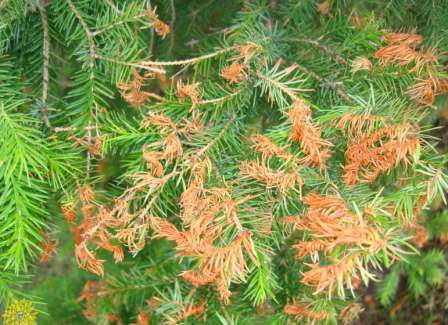
Rust lesions of coniferous plants for the garden
Pine spinner is manifested by an S-shaped deformation of the shoots and the death of their tops. In spruces, the disease is manifested by the formation on the inside of the scales of rounded, dusty aesiopustules of a dark brown hue. Cones linger on the branches of coniferous plants for several years. The seeds produced by them are not viable. There is a curvature of the shoots.
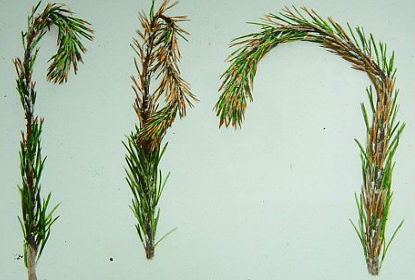
Pine spinner
The most effective protective measure is the spatial isolation of diseased specimens. Be sure to cut damaged shoots. It is possible to increase the resistance of low-growing ornamental coniferous plants to rust with immunostimulants and specific micronutrient fertilizers.
Representatives of junipers and larches also suffer from cancerous lesions. Biotorell type cancer progresses in the tissues of the cortex. It dries up, changes its color, cracks. As a result, the underlying wood begins to die.
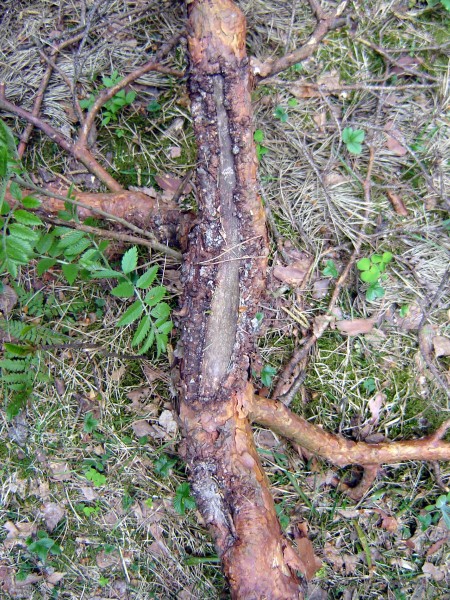
Biatorella type of cancer progresses in the tissues of the cortex
Nectrium cancer is an enemy of ornamental coniferous plants of the juniper genus. Specific brick-red pads appear on their bark. The development of the disease is accompanied by the death of the bark, a change in the color of the needles.
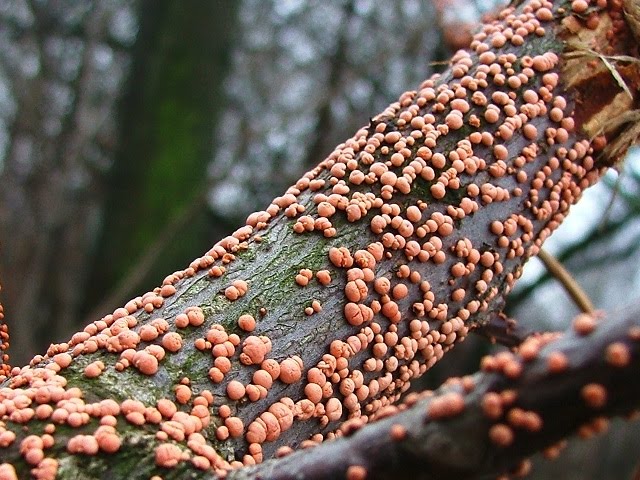
Nektrium cancer on juniper
On larch, cancer forms whole wounds, deeply corroding the trunks. The height of the disease falls on a period of rest.
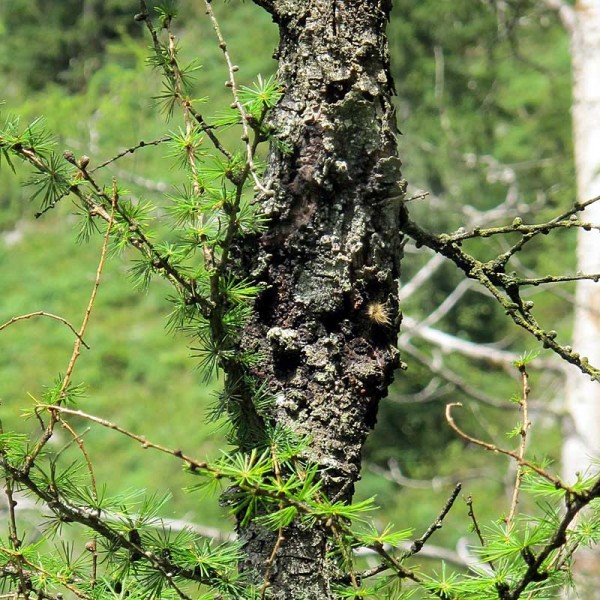
Larch affected by cancer
In therapeutic measures, cleaning of wounds and affected areas, followed by treatment of the areas with putty. In the absence of a garden pitch, you can use paint with a linseed base. Protection against diseases for coniferous plants will be the spring-autumn spraying of plantings with a Bordeaux mixture.
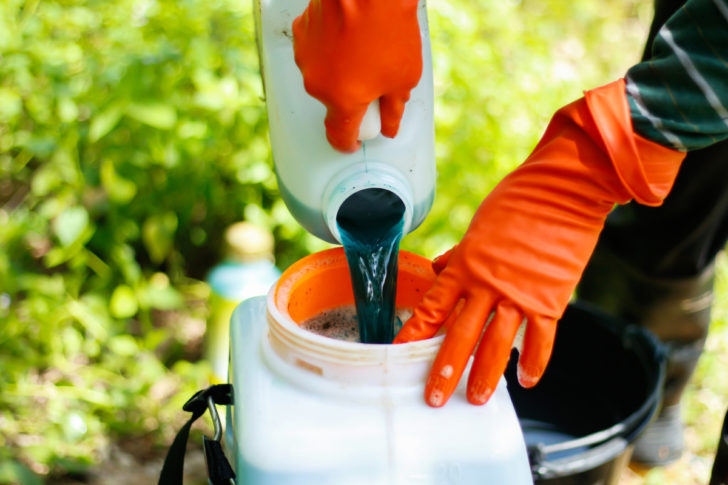
Spring-autumn spraying will protect coniferous plants from diseases
Conclusion
Coniferous plants in the decor of a garden landscape are wonderful, but you need to understand that only their healthy plantings, which give a systematic increase, will look spectacular. Do not be lazy to show minimal care for your prickly pets, and they will certainly thank you for every bit of attention.
Photo gallery - coniferous plants for the garden
Video
